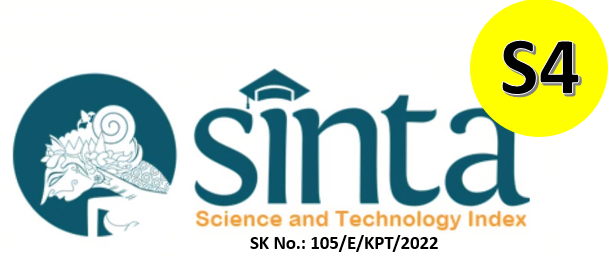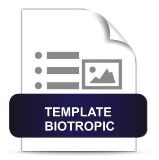Manipulasi Temperatur Terhadap Perkembangan Sex Ratio Black Shoulder Fly (Hermetia illucens)
DOI:
https://doi.org/10.29080/biotropic.v8i1.2063Keywords:
BSF, Hermetia illucens, larval mortality, sex ratio, temperatureAbstract
Temperature is one of the factors that influences the life cycle of Hermetia illucens. This research aimed to determine the effect of temperature differences stimulated at the larval stage on the sex ratio of H. illucens. Knowledge of the correct use of temperature can be used as a reference in cultivating H. illucens. The research design used a Completely Randomized Design (CRD) with temperature variations (27oC; 30oC : 36oC). The variables observed included the sex ratio of H. illucens. Data were analyzed using one way ANOVA at a significance level of 95%. The research results show that the optimal sex ratio for cultivation is at room temperature (24°-31°C), namely 55% females and 45% males. The 27°C temperature treatment had the highest number of female, 70.83%, while the number of male was the highes. found at a temperature of 30°C, 62.50%.
Downloads
References
Darmawan, M., Sarto, & Agus, P. (2017). “Budidaya Larva Black Soldier Fly (Hermetia illucens) Dengan Pakan Limbah Dapur (Daun Singkong).” In Simposium Nasional RAPI XVI (pp. 208–213).
Fahmi, M. R. (2015). Optimalisasi proses biokonversi dengan menggunakan mini-larva Hermetia illucens untuk memenuhi kebutuhan pakan ikan. In Pros sem nas masy biodiv indon (Vol. 1, pp. 139–144). doi:10.13057/psnmbi/m010124
Heaton, V., Moffatt, C., & Simmons, T. (2014). Quantifying the temperature of maggot masses and its relationship to decomposition. Journal of Forensic Sciences, 59(3), 676–682. doi:10.1111/1556-4029.12396
Lalander, C. H., Fidjeland, J., Diener, S., Eriksson, S., & Vinnerås, B. (2014). High waste-to-biomass conversion and efficient Salmonella spp. reduction using black soldier fly for waste recycling. Agronomy for Sustainable Development, 35(1), 261–271. doi:10.1007/s13593-014-0235-4
Li, L., Wang, Y., & Wang, J. (2016). Intra-puparial development and age estimation of forensically important Hermetia illucens (L.). Journal of Asia-Pacific Entomology, 19(1), 233–237. https://doi.org/10.1016/j.aspen.2016.01.006
Minggawati, I., Lukas, L., Youhandy, Y., Mantuh, Y., & Augusta, T. S. (2019). Pemanfaatan Tumbuhan Apu-Apu (Pistia stratiotes) Untuk Menumbuhkan Maggot (Hermetia illucens) Sebagai Pakan Ikan. Ziraa’Ah Majalah Ilmiah Pertanian, 44(1), 77. doi:10.31602/zmip.v44i1.1665
Monita, L., Sutjahjo, S. H., Amin, A. A., & Fahmi, M. R. (2017). Pengolahan Sampah Organik Perkotaan Menggunakan Larva Black Soldier Fly (Hermetia illucens). Jurnal Pengelolaan Sumberdaya Alam Dan Lingkungan, 7(3), 227–234.
Sastro, Y. (2016). Teknologi Vermikomposting Limbah Organik Kota.
Suciati, R., Faruq, H., Biologi, J. P., & Timur, J. (2017). Efektifitas Media Pertumbuhan Maggots Hermetia illucens ( Lalat Tentara Hitam ) Sebagai Solusi Pemanfaatan Sampah. Biosfer: Jurnal Biologi Dan Pendidikan Biologi, 2(1), 8–13.
Supriyatna, A., & Putra, R. E. (2017). Estimasi Pertumbuhan Larva Lalat Black Soldier (Hermetia illucens) dan Penggunaan Pakan Jerami Padi yang Difermentasi dengan Jamur P. chrysosporium. Jurnal Biodjati, 2(2), 159. doi:10.15575/biodjati.v2i2.1569
Supriyatna, A., & Ukit, U. (2016). Screening and Isolation of Cellulolytic Bacteria from Gut of Black Soldier Flays Larvae (Hermetia illucens) Feeding with Rice Straw. Biosaintifika: Journal of Biology & Biology Education, 8(3), 314–320. Retrieved from http://journal.unnes.ac.id/nju/index.php/biosaintifika/article/view/6762
Tomberlin, J. K., Adler, P. H., & Myers, H. M. (2009). Development of the Black Soldier Fly ( Diptera : Stratiomyidae ) in. Environmental Entomology, 38(3), 930–934.
Widiyanto, A. F., Pratiwi, O. C., & Yuniarno, S. (2017). Model pengelolaan sampah rumah tangga di kabupaten banyumas. In ”Pengembangan Sumber Daya Perdesaan dan Kearifan Lokal Berkelanjutan VII”17-18 November 2017 Purwokerto (pp. 488–499).
Downloads
Published
How to Cite
Issue
Section
License
Copyright (c) 2024 Trisno Haryanto, Nabila Putri Effendi, Trisnowati Budi Ambarningrum, Eko Setiyono, Hery Pratiknyo

This work is licensed under a Creative Commons Attribution-NonCommercial-ShareAlike 4.0 International License.













